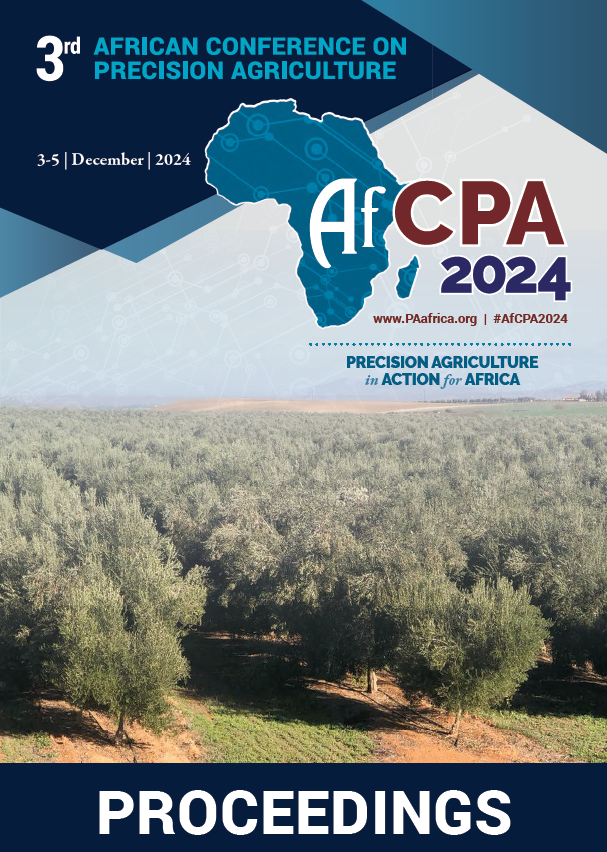Download the Conference Proceedings
Proceedings
Authors
| Filter results6 paper(s) found. |
|---|
1. Assessment of Performance of APSIM Model with Experimental Data from the Short-term Biochar Experiment at Guinea Savanna Zone (Nyankpala), GhanaA three-year season, short-term study (2017–2019) was conducted at farming for the future UDS-Nyankpala, near Tamale in the Guinea Savannah Zone of Ghana. It was done to assess the effect of five different sources of biochar applications on rice-cowpea intercrop system on soil nutrient status and upland rice productivity. The experimental treatments comprised a control, 5 t/ha rates of high and low pyrolysis (400-7000C) of biochar. Five different sources of biochar (groundnut... |
2. Integrating Models and Data to Observe the Effect of Biochar Used in a Rice-Cowpea Intercrop System on Soil Hydrological PropertiesPhysical properties of biochar like small particle size are highly porous and can modify soil properties and help to enhance soil water dynamics. However, there has been no consistent long-term measurements of change in soil physical properties due to biochar application under real field conditions. The objective was to assess the impact of biochar use in a rice-cowpea intercrop system on soil hydraulic properties at the field by integrating a modeling with soil water content measurements in two... |
3. Simulate Plant Growth Response to Biochar applications on upland rice-cowpea intercrop and Inorganic N and P on a Ferric luvisols Soil in GhanaFive different sources of biochar (groundnut shells, rice husk, poultry manure, sawdust, and corn cobs) at a rate of 5t/ha were incorporated into the soil at a depth of 30 cm during field experiments in Nyankpala in Ghana. A split plot factorial design arranged in a randomized complete block with 4 replications was used. The uniqueness of the studies was that cowpea and inorganic fertilizer treatments were added to aid upland rice-cowpea N and P content of the biochar. These studies provide a... |
4. Comparative fertilization effects on maize productivity under conservation and conventional tillage on sandy soils in a smallholder cropping system in ZimbabweLow crop yields, food insecurity and abject rural poverty continue to be rampant in much of Southern Africa. Components of conservation agriculture (CA) are being widely promoted in southern Africa as one of the strategies to increase food security and mitigate rural poverty, despite there being scarce empirical evidence on their efficacy on degraded soils. This research aimed to assess the effects of tillage systems on maize grain yields under rain-fed conditions across a soil organic matter... R. Chikowo, S. Zingore, N. Kafesu |
5. Productivity and Profitability of Maize (Zea Mays L.) As Affected by Planting and Fertilization Schemes on the Ferralsols of Southern TogoA sustainable improvement of crop productivity and profitability in the current context of climate change and land degradation is necessary to meet the food and cash needs of a ceaselessly growing population. In order to help achieve this aim, we carried out a 2-year experiment (2020 and 2021) at the University of Lomé Agronomic Experiment Station. The experiment was set up in a split-plot design, composed of eight (08) treatments in three (03) replicates each. Two planting schemes (SC1=... M. Mazinagou, M.J. Sogbedji, A. N'gbendema |
6. Determination of Major Limiting Nutrients and Site-specific Fertilizer Recommendation Towards Optimizing Rice Production in the Irrigated Perimeter of the Zio Valley (Togo)Adoption of appropriate inorganic fertilization schemes is essential to improving fertilizer use efficiency and crop performance. This study aims to contribute to the improvement of rice yields in the irrigated perimeter of the Zio Valley in Togo through appropriate inorganic fertilization. Nutrient omission trials were set up during November 2020 to March 2021 and May to September 2021, with producers identified in the four (04) villages (Mission Tove, Ziowonou, Kovie and Assome) located in the... A. N'gbendema, M.J. Sogbedji, M. Mazinagou |
